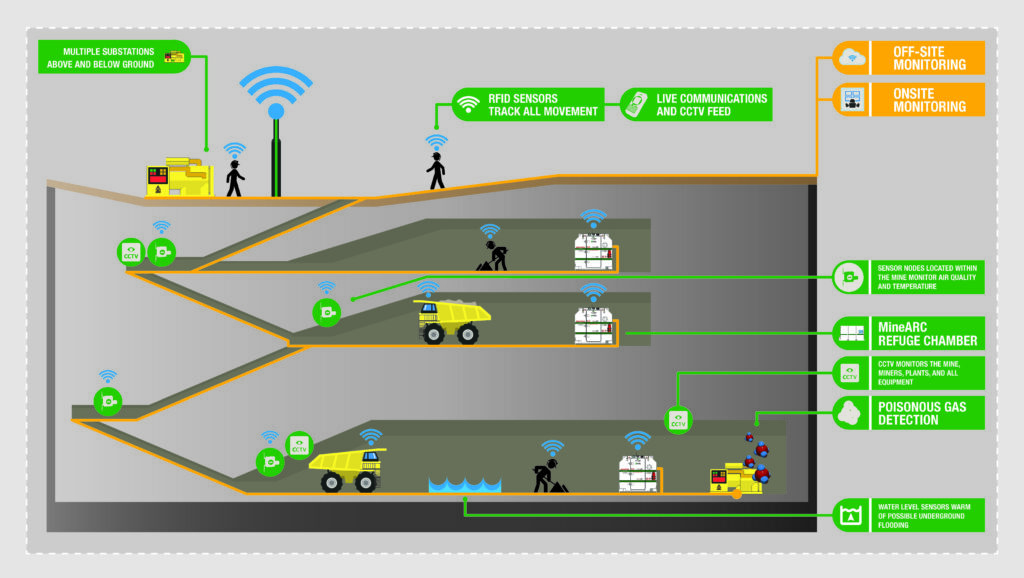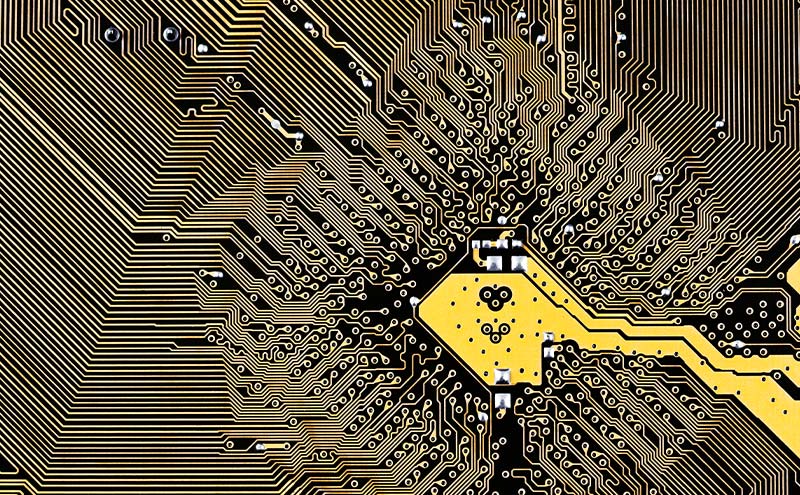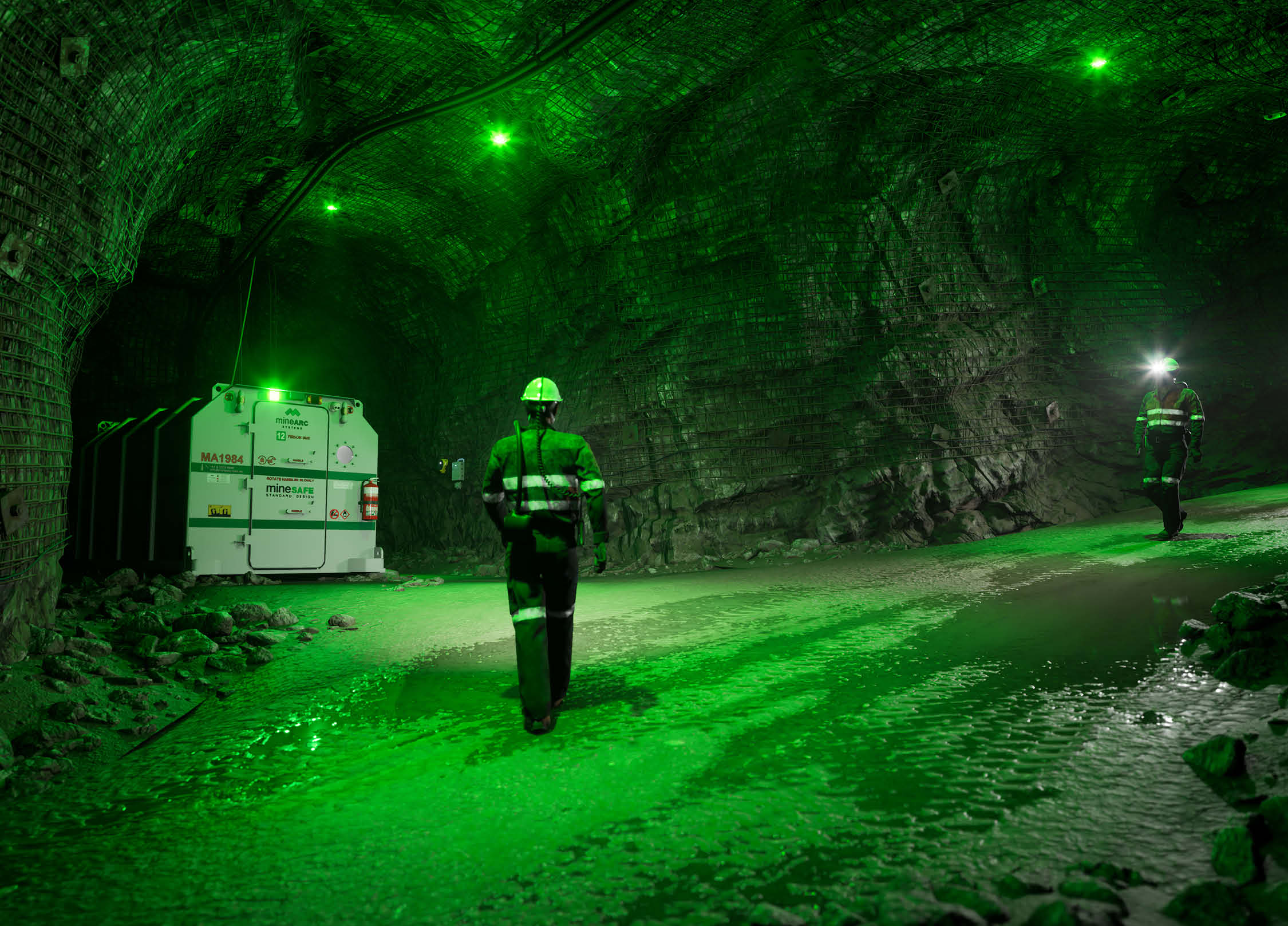IoT in mining can dramatically impact global safety standards; improving data relay and communications, across a robust underground network.
The expanding connectivity between people and devices has been a significant driver behind this rapid growth in modernisation. As we embrace this trend in our personal lives, organisations are also utilising technology through the ‘Internet of Things’ (IoT) to improve productivity and lower costs.
Innovations in technology are dramatically changing the face of safety.
The Foundation of Underground Connectivity
In basic terms, the concept of IoT is about connecting all ‘things’ to the internet and each other. ‘Things’ applies to all kinds of devices and their components. For IoT in mining, these ‘things’ include a vibration sensor on a pump, telemetry from hardware sensors on a truck, light or motion sensors in crib rooms, RFID tracking or personnel tracking in a cap lamp.
IoT differs from the traditional architecture of a Supervisory Control and Data Acquisition (SCADA) based system. The primary difference between these two systems revolves around the flexibility of the network. For underground activities, this allows for a more extensive range of devices to become connected; therefore, increasing resolution for automation.

Creating an Underground Comms Network
As mine sites become digitalised, the need to collect and analyse more data increases, as does the number of devices linked to a network. The internet is usually easy to access. LTE connection in our pocket and Wi-Fi throughout the home and fibre in our neighbourhood allows a physical connection to a communications network. In an underground environment, this can often be challenging.
With the age of remote operations upon us, refuge chambers are ideally positioned to be an integral part of an underground communication network. The challenges of connectivity underground are addressed through the implementation of a node network.
A node network must connect to the primary communications network and be flexible yet durable enough to meet the unique physical characteristics. Refuge chambers are an ideal hub for a node network, as they are built to withstand an underground environment’s harsh conditions.
A MineARC node system, with refuge chambers at their hub, has been designed so that each subnetwork can become a local standalone network in the event of a catastrophic failure or disconnection through mining activities.
Local Refuge Chamber Node Network (LRCNN)
A refuge chamber supports a mixture of physical and radio communication links to IoT devices. Additionally, each chamber has several nodes connected to it, creating a Local Refuge Chamber Node Network (LRCNN), which connects to a broader network. Each node is directly interconnected and supported with power redundancy from the security of the refuge chamber.
Local networks are crucial to monitoring events and environmental conditions. They ensure the safety of all personnel and efficient re-entry procedures, through:

- Sensor reporting back to the refuge chambers.
- Monitoring atmospheric conditions such as gas levels, heat, dust and pressure within the LRCNN.
- First entry personnel can wait within the safe environments.
- Tracking of personnel allowing for accountability and efficient rescue operations, if required.
MineARC is working to develop capabilities at the refuge chamber further to combat the challenges arisen from the physical location of the hubs and the layout, connection, and location of the LRCNN.
Automation and Information Processing
IoT devices are becoming more and more valuable to the progress of full automation. However, if the system is offline or insecurely stored, it does not provide a reliable automation platform. The autonomy of all refuge chambers (hubs) adds redundancy to underground mines’ connectivity challenges.
Through automation, information is processed and acted upon with little to no intervention. Data is received from a range of sensors across the network and delivered to a central location where data computation and logic response occurs. For example, a water tank level indicator is reading high? Therefore the pump system is then prompted to turn off. Or is a carbon monoxide gas sensor is starting to read carbon monoxide? There’s potentially a fire; an alert is sent. IoT supports automation, enabling immediate responses – reducing delays, wastage and downtime, and their adverse effect on productivity and safety.
Human Interface
More data than ever before are being received and analysed as the number of connected devices increases; however, information obtained must be decipherable and functional to the end-user.
MineARC Systems have developed the platform GuardIAN to become the human interface for refuge chambers. GuardIAN RCM is a real-time remote monitoring and diagnostics tool that reads the life support systems through to the control room. It will expand to include an array of linked devices located anywhere with a broader network connection.
The expansion of MineARC products and developments focuses on allowing other control systems to operate from information collected at the local refuge chamber node network. Push notifications and data for a mine site, or those forwarded to MineARC, will effectively and efficiently solve problems and reduce the additional need for personnel to be underground.
The design of refuge chambers allows for multiple levels of redundancy of all systems to ensure life support and withstand the harsh conditions of underground operations. MineARC is pushing the limits of safety standards by embracing digital transformation incorporating IoT and product development.






